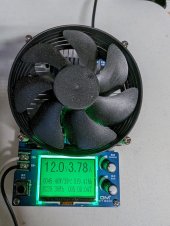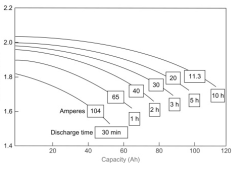I don't have a great answer about optimum charging protocol and equipment for this long-term standby use. I've got the same situation and am grappling with it. I got some informed opinions here, you might find them useful. This is more complete than any thoughts I can offer below:
https://diysolarforum.com/threads/a...uently-must-i-charge-to-100.48562/post-617497
Thoughts:
- Good news: Whatever you have done with the existing smaller Yausa seems to have preserved its life fairly well for almost a decade. Slow decline, but that's something you can work with. So, maybe this isn't rocket science.
- Definitely keep any lead acid battery fully charged almost all the time. Also, keeping them cool all year long helps maintain their capacity over the long term. That's one reason why a basement is great for their longevity.
- There seem to be two "camps" in regard to keeping a flooded lead acid battery healthy for long time.
-- Camp 1: It is best to periodically (monthly? Every few months?) discharge the battery to about 80% SOC and then charge it at a high rate (.15 - .20C) then a final absorption charge. This high charge rate is intended to help keep the plates clean of sulfation and stir up the electrolyte. Float charge: Maybe, but maybe not strictly required since the battery will be topped up every month (expected self-discharge in 30 days: Temp dependent, but about 3% at 65F). In your case, if you buy a 110AH battery you'd need to also get a (big but simple) charger (20A).
-- Camp 2: Just leave the battery on float all the time, with periodic equalization charges (high voltage, low amperage). Buy a
good smart charger/maintainer to do this (some would recommend NOCO Genius 5, etc).
I suppose either method would work okay.
The bigger question IMO is what to do to keep that pump running long term? Basement flooding from surface drainage can be a risk for many days, floosding from a rising water table can be longer than that. If you've got AC power (and the DC pump is just running because the AC pump is overwhelmed) then you can use an AC battery charger to keep the DC pump going. But if the AC power is off and that DC battery stands between you and an expensive, extremely inconvenient and unhealthy flooded basement, then the run time on that battery may not see you through. You will not be happy, and we know that the electric company can be very inaccurate regarding expected down time. That will mean recharging your some other way.day. Can you count on nearby AC power (friend's house, etc) that you can drive to and plug in charger and battery? Can you charge the 12V battery with your car (sounds easy, but it isn't. This is never optimum and can be dangerous if not done right.) Solar charger? Works great when it works, but the times you're likely to get flooding in Michigan is when it isn't sunny. If you've got a place to safely run it, a small (1500W) inverter generator would be perfect: It would run your AC sump pump, it would allow charging of your battery (so, keep the DC pump working all night when the generator is off), it might be enough to start and run a freezer or fridge, it would power a gas furnace (darn handy if you are having an ice storm), it'll certainly charge your cell phone, flashlights, cordless tools, etc.





